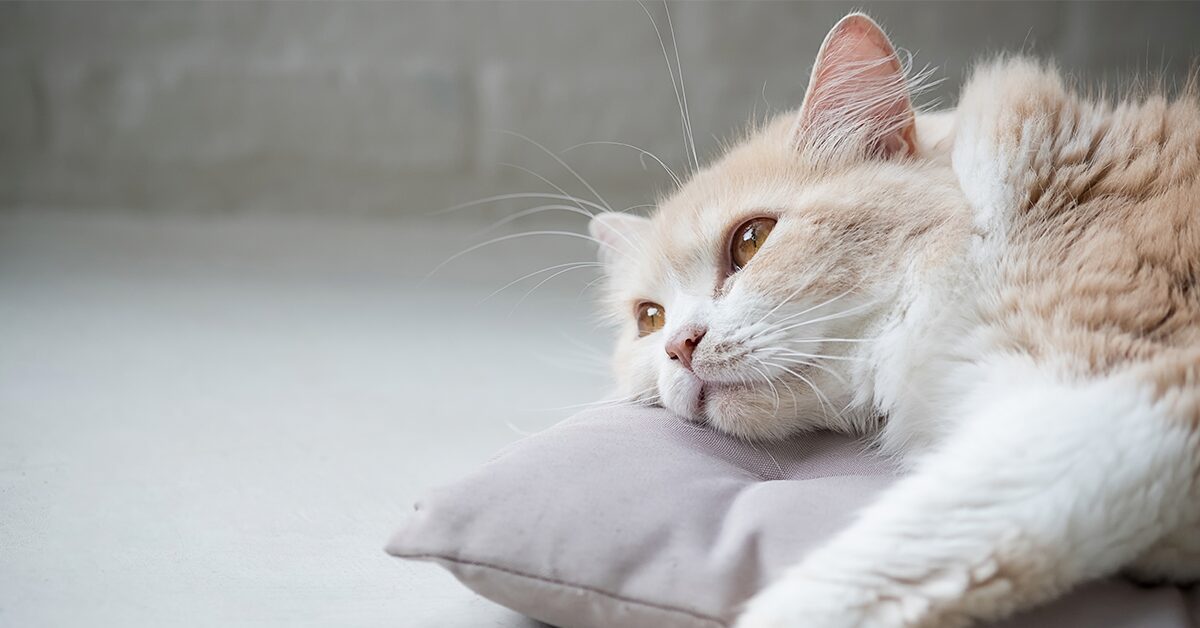It’s not uncommon for cat parents to miss how many times their kitties visit the drinking bowl. In fact, cats instinctually avoid drinking stagnant water, which increases their risk of dehydration.
This risk is exacerbated in the warmer months when dehydration amongst pets runs rampant.
If you have a cat, you know they can be masters at hiding illness – so how do you know they’re dehydrated?
Let’s dive in.
What is dehydration?
The medical definition of cat dehydration is a water loss of around five percent. A loss of more than ten percent water is considered severe dehydration.
Dehydration can affect all the systems of a cat’s body since the electrolytes in water – like sodium, potassium, and chloride – are essential to healthy organ function. In some cases, it can lead to serious consequences.
If your cat is suffering severe dehydration, see a vet immediately – they can treat it faster and better than you can on your own.
Why does it happen?
Numerous factors can contribute to cat dehydration. The truth is that, like all living things, cats have delicate systems, and many factors can disrupt them. In hot weather, cats may lose additional fluids. If your cat is sick for another reason, the symptoms of that disease, like diarrhea, or vomiting, can lead to significant water loss as well. Dehydration might also be the result of diabetes, hyperthyroidism, or kidney disease.
Emotional problems can also contribute to dehydration. If your cat is upset with changing circumstances, or recently experienced trauma, they may have a reduced urge to drink water. In the aftermath of a big life event, like moving to a new home or a traumatic incident, keep a close eye on your cat to make sure that they’re not showing any signs of dehydration.
Be sure to monitor your cat’s mood and water intake. Your cat should drink between 3.5-4.5 ounces of water for every five pounds of their body weight, so a ten-pound cat should drink seven to nine ounces of water each day. If you feed your cat wet food, they may drink less water, since they’re getting water from their food. Conversely, if they solely eat dry cat food, they should drink more water.
How can I tell if my cat is dehydrated?
As outlined above, some of the most common symptoms of dehydration are low energy, a diminished appetite, and distinctively sunken eyes. These are easy to spot, especially when you know your cat well. If your cat is lethargic and leaves their bowl untouched, and their big bright eyes seem dimmer than usual, it’s possible that dehydration is to blame.
Other symptoms, like elevated heart rate or skin elasticity, may not be immediately visible, but there are ways you can check. One of the most common tests is simple: pull up some of your cat’s skin by the shoulder blades and hold it. When you let go, if your cat is healthy, it will quickly go back into place. If your cat is dehydrated, it will take longer. This is called a tent test. If it takes a long time for the skin to go back to normal, call your vet immediately.
Some of the other symptoms include panting, sweating, dry gums, constipation, and thick saliva. None of these are normal. Cats, unlike dogs, don’t pant under normal circumstances. They rarely sweat. They should have minimal saliva. Their gums should be moist.
What should I do if my cat is dehydrated?
The most obvious way to combat dehydration is to get your cat to drink more water. But any cat owner knows that getting your cat to do anything is easier said than done. The trick may have something to do with how you present water to your cat. Cats are finicky, and even your choice of water bowl may affect their water intake. Cat water fountains are an emerging trend that can encourage cats to drink more.
Replacing your cat’s water regularly to keep it fresh and clean will also make it more attractive. Consider adding an ice cube to the water dish, or perhaps small amounts of meat to improve the flavor.
As mentioned above, sometimes dehydration can be the result of a more serious medical issue, like diabetes or kidney disease. If you suspect that this may be the case, you should consult your veterinarian. They have numerous methods to treat dehydration, including intravenous and subcutaneous fluid injections. The intravenous injection goes straight into your cat’s circulatory system, while subcutaneous injections go under the skin and create a “camel hump” that should slowly recede over a few days.
Your vet will also be able to diagnose and treat underlying causes, to make sure that dehydration doesn’t become a recurring issue. It’s important to maintain a relationship with a veterinarian so that they can come to recognize your cat’s unique characteristics and needs.
Bottom line: A dehydrated cat needs special attention. That’s why it’s so important to recognize the signs, know how to address them, and be willing to consult a veterinarian for help if it becomes necessary.



